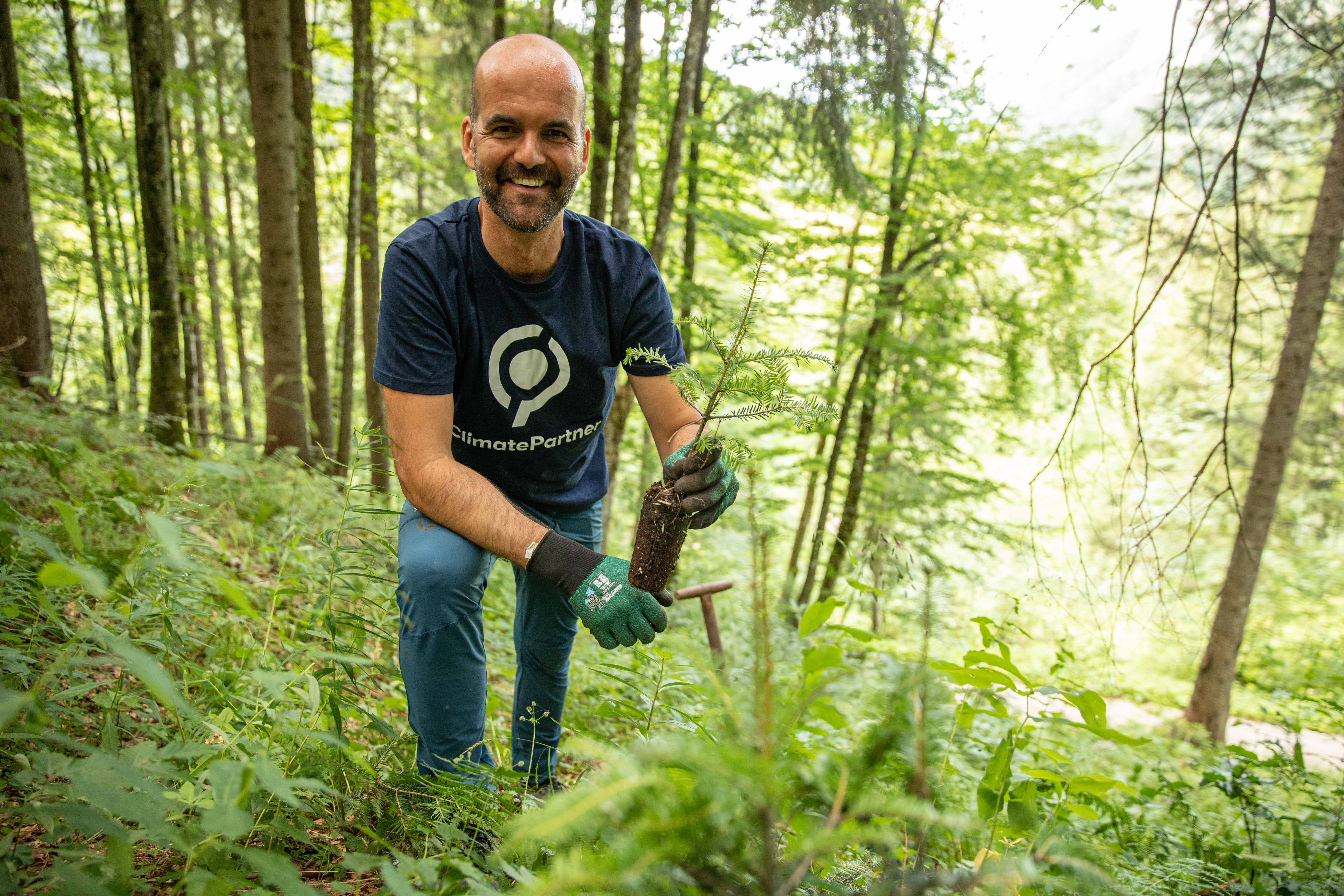Biodiversity in Europe: How companies can support regional nature conservation
July 10, 2025
Biodiversity loss has become a reality across Europe. Climate change, land use, and pollution are accelerating species extinction and the collapse of ecosystems. Native forests are dying due to droughts and pest infestations, and agricultural yields are declining.
The good news: more and more companies are taking responsibility and reducing their emissions. At the same time, there’s a growing desire to support nature conservation efforts locally.
With ClimatePartner, companies have two ways to do exactly that:
- Combined projects link certified international climate action with additional regional commitment.
- Impact Contribution refers to financial support from companies for regional nature conservation projects.
This article explains how these approaches work and what value they create for both companies and their local environment.
Combined Projects vs. Impact Contribution
1. Combined projects with ClimatePartner
Companies that support a combined project contribute to two initiatives at the same time: a certified climate project and a local biodiversity initiative. For every tonne of CO₂ demonstrably reduced by the certified project, a regional nature conservation activity is supported, such as planting a tree or funding a conservation measure. Typically, a company’s carbon footprint forms the basis for the financial contribution.
Certified climate projects are registered under international standards like the Gold Standard or Verra (VCS), regularly verified by independent third parties, and meet strict criteria for additionality and permanence. They contribute to global climate action by avoiding, reducing, or removing carbon emissions from the atmosphere. The resulting verified emission reductions (VERs) serve as proof of impact.
These certified projects often generate impact in regions with the greatest need for financial support and technology transfer, particularly in Least Developed Countries (LDCs). In addition to reducing emissions, they create jobs, enhance access to healthcare and infrastructure, and thus strengthen local communities.
On the other hand, regional nature conservation projects usually do not create verified emission reductions. Instead, they focus on other measurable environmental outcomes, such as improved biodiversity, water cycle stabilisation, and soil and habitat protection.
By supporting a combined project, companies create double the impact: strengthening regional nature conservation and contributing to global climate action.
Project example: Solar energy in Togo and reforestation in Germany
This project combines solar energy in Togo with the reforestation of degraded forest areas in Germany. Site-appropriate and climate-resilient tree species enhance biodiversity, improve forest resilience against extreme weather events, and increase carbon storage capacity.
Find out more about the project here.

2. Impact Contribution
Impact Contribution enables companies to support regional conservation projects independently of their carbon footprint. The focus is on the environmental co-benefits: increased biodiversity, more resilient forests, and healthy ecosystems.
These projects are often in early or implementation stages, do not generate verified emission reductions, and are not part of the voluntary carbon market. This is where Impact Contribution comes in: companies provide essential funding to help realise and scale these initiatives.
Impact contribution gives companies new ways to engage in climate action beyond their value chain, with an emphasis on local impact.
Companies can define their contribution individually, for example:
- One tree planted per employee
- One hectare of restoration per 1% of revenue
- €30 donations per product sold
This makes environmental engagement tangible, measurable, and credible, and easy to communicate.
Project example: Restoring swamp forests in Germany
In the past, moist swamp forests near Düsseldorf were replaced by unsuitable tree species, which had a negative impact on biodiversity, soil, and water systems. This project restores ecological balance and creates the conditions for the development of a near-natural swamp forest, a habitat for dragonflies, amphibians, and rare birds.
Seasonal flooding is reintroduced to strengthen water retention in the landscape. Non-native trees are selectively removed, replaced by native species, or left as valuable deadwood.
To know more about the project, click here.
.jpg)
Funding models for regional nature conservation
Whether you support a combined project or an Impact Contribution project through ClimatePartner, various funding options are available:
- Ton-for-ton: The company’s carbon footprint forms the basis of investment. For every tonne of CO₂ emitted by the company, one tonne is reduced via the certified project. This approach is ideal for combined projects.
- Money-for-ton: The company sets an internal carbon price per emitted tonne and multiplies it by its carbon footprint. The price can be hypothetical or real, depending on the company’s strategy and goals.
- Money-for-money: Instead of emissions, this model is based on economic indicators. Companies allocate a share of their financial performance – e.g., 1% of revenue or profit – to conservation projects. Alternatively, contributions can be tied to sales, customers, employees, or services rendered. In this way, climate action becomes directly linked to business success.
- Flexible budget: Companies define a freely available budget to support selected projects.
Local engagement that fits your business needs
Whether through a combined project or Impact Contribution, both approaches allow companies to invest directly in regional climate and nature conservation.
Combined projects create dual impact by linking international climate action with local engagement, while Impact Contribution enables the realisation and scaling of biodiversity-focused, non-carbon projects.
Ready to learn more or get started?
Reach out to us and together we’ll find the project that fits your company best.